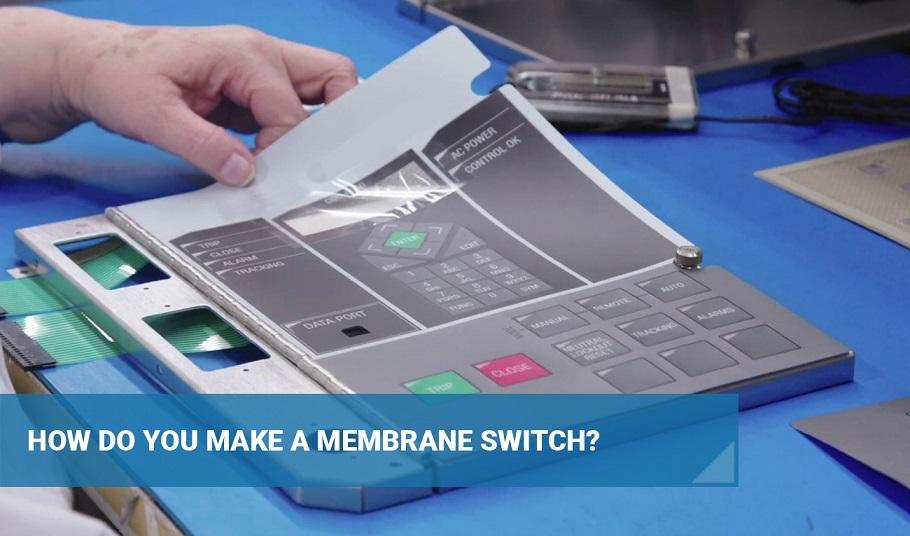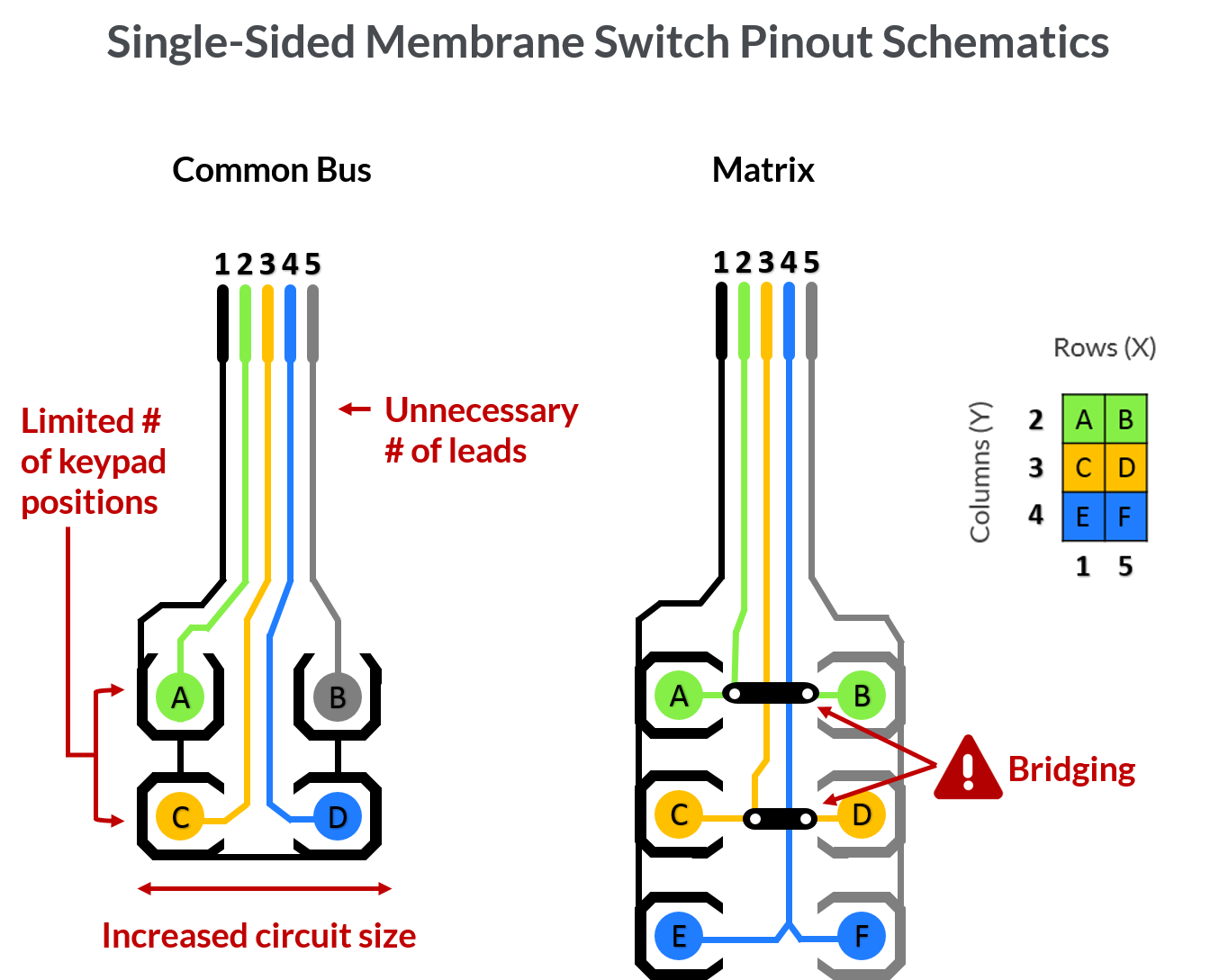Why Picking the Right Membrane Switch Is Crucial for Your Product Design
Understanding the Capability of Membrane Layer Changes for Interface Tools
The performance of membrane layer changes represents a significant advancement in interface style, combining effectiveness with aesthetic versatility. These buttons operate via a multi-layered structure that translates individual communications into electric signals, enabling for both compact formats and resilience versus ecological aspects. As industries significantly prioritize customer experience, understanding the subtleties of membrane switch modern technology ends up being important. What implications do these innovations hold for future applications, and exactly how might they redefine customer interactions throughout various tools?
What Are Membrane Switches?
Membrane buttons are ingenious user interface gadgets that assist in individual communication with digital equipment. These versatile components contain several layers, consisting of a visuals overlay, spacer, and a published circuit layer. The style enables a seamless combination right into different digital gadgets, improving both the visual and practical elements of interface.
Membrane layer switches are typically used in a vast array of applications, from house appliances to commercial machinery and clinical gadgets. Their construction commonly includes a slim profile, making them a perfect option for small designs. The tactile comments given by these buttons can be crafted to satisfy certain customer choices, making sure efficient communication in between the customer and the gadget.
Sturdiness is an additional substantial advantage of membrane buttons, as they are immune to dust, dampness, and chemicals, which enhances their life expectancy in requiring environments. Additionally, these switches can be customized in regards to form, dimension, and graphic design, enabling branding and user-specific attributes. On the whole, membrane changes stand for a useful service for enhancing user experience in digital gadgets, incorporating performance with aesthetic charm in an effective way.
How Membrane Switches Over Job
Operating on a simple principle, membrane changes make use of a split construction to sign up individual input efficiently. Each button consists of numerous layers, consisting of a printed circuit layer, a spacer layer, and a leading visuals layer, which are designed to function together seamlessly. When an individual presses the top layer, it compresses the spacer layer, bringing the conductive aspects of the circuit layer right into contact with each other.
This get in touch with creates a shut circuit, signaling the device to implement a specific function. The layout permits various setups, consisting of responsive responses, which can boost the individual experience by supplying a physical feeling upon activation. The materials used in membrane switches commonly consist of versatile substratums, such as polyester or polycarbonate, which make sure toughness and durability against deterioration.

Trick Benefits of Membrane Buttons

Another substantial benefit is their compactness. Membrane buttons are thin and lightweight, which allows suppliers to save space in their tools without giving up functionality. This function is particularly beneficial in applications where weight and volume are important factors to consider.
Additionally, membrane switches are immune to dust, dampness, and chemicals, improving their sturdiness. This strength extends their lifespan and lowers the demand for regular replacements, causing expense savings navigate here in time.
Additionally, the tactile responses given by membrane layer switches can be optimized to improve customer interaction. They can include features such as raised buttons or distinct clicks, improving usability and customer experience.
Applications Throughout Industries
Customer interface tools utilizing membrane buttons prevail in a large range of sectors, showcasing their versatility and performance. Membrane Switch. In the clinical market, membrane buttons are essential to gadgets such as analysis devices and patient monitoring systems, where their resilience and ease of cleansing are important for keeping hygiene standards. Likewise, in the vehicle market, these buttons are used in control panel controls and infomercial systems, providing a smooth and modern-day user interface for individuals.
In addition, the consumer electronics sector advantages from membrane switches in appliances and handheld gadgets, where small style and easy to use user interfaces improve individual experience. Industrial applications also leverage membrane layer switches for control panels in machinery and automation systems, highlighting their robustness and resistance to harsh atmospheres.
In the aerospace and defense industries, membrane layer buttons are used in cockpit controls and equipment, where integrity and efficiency under extreme conditions are critical. Additionally, the pc gaming sector progressively incorporates membrane layer buttons in controllers and game devices, adding to an interesting individual experience. Overall, the flexibility of membrane layer changes enables their extensive use throughout many industries, underscoring their value in contemporary user interface style.
Future Patterns in Membrane Layer Change Technology

In addition, using sophisticated products, such as polycarbonate and polyester films, is expected to increase, giving enhanced toughness and resistance to environmental stressors. These materials add to the total long life of membrane switches, making them suitable for harsher industrial applications.
Additionally, the unification of clever technology, including IoT connectivity, will allow membrane layer buttons to connect with various other tools and systems, promoting a more interactive user experience. This trend lines up with the growing demand for smart devices across various sectors, from health care to customer electronic devices.
Lastly, personalization choices are expected to broaden, permitting manufacturers to develop bespoke remedies customized to details customer requirements and preferences. These developments will place membrane layer buttons as crucial parts in the development of you could try these out interface technology.
Conclusion
In final thought, membrane layer switches stand for a critical innovation in user interface modern technology, offering a reliable and flexible remedy for diverse digital applications. As innovations in material scientific research and touch picking up the original source modern technologies proceed, the capability and applicability of membrane switches are anticipated to increase, reinforcing their relevance in modern digital tools.